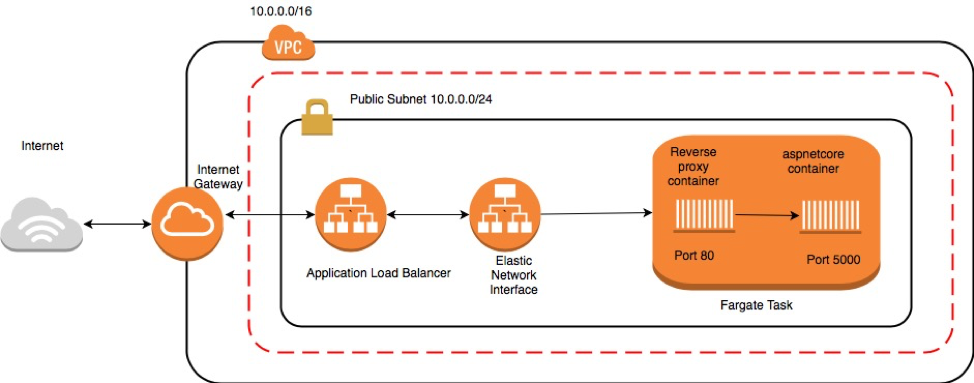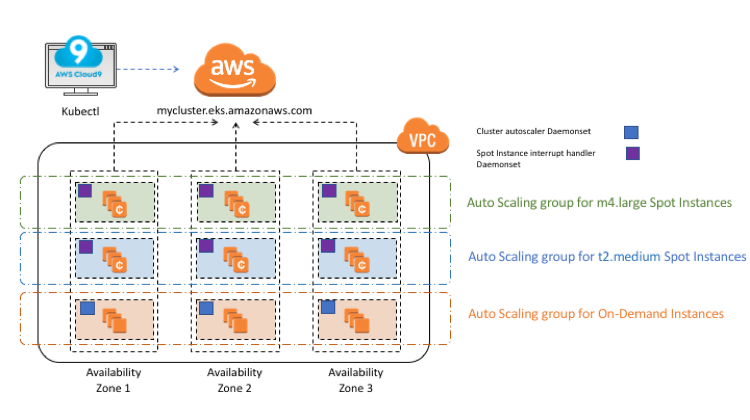AWS Compute Blog
Tag: Containers
Migrating your Amazon ECS deployment to the new ARN and resource ID format
Update – August 21, 2020 – Added a section with the latest timeline. Starting today you can opt in to a new Amazon Resource Name (ARN) and resource ID format for Amazon ECS tasks, container instances, and services. The new format enables the enhanced ability to tag resources in your cluster, as well as tracking […]
Scanning Docker Images for Vulnerabilities using Clair, Amazon ECS, ECR, and AWS CodePipeline
Post by Vikrama Adethyaa, Solution Architect and Tiffany Jernigan, Developer Advocate Update – July 26, 2021 – While this post remains accurate, we want to make it clear that we did announce built in image scanning in Amazon ECR in October 2019. The built in integration provides a simpler solution than what is in this post. […]
Introducing private registry authentication support for AWS Fargate
This post courtesy of Tiffany Jernigan, AWS Developer Advocate – Containers Private registry authentication support for Amazon Elastic Container Service (Amazon ECS) is now available with the AWS Fargate launch type! Now, in addition to Amazon Elastic Container Registry (Amazon ECR), you can use any private registry or repository of your choice for both EC2 and Fargate launch types. […]
Hosting ASP.NET Core applications in Amazon ECS using AWS Fargate
This post courtesy of Sundararajan Narasiman, AWS Partner Solutions Architect There is an increasing amount of customer interest in hosting microservices-based applications using Amazon Elastic Container Service (ECS), largely due to the benefits offered by AWS Fargate. AWS Fargate is a compute engine for containers that allows you to run containers without needing to provision, […]
Run your Kubernetes Workloads on Amazon EC2 Spot Instances with Amazon EKS
Contributed by Madhuri Peri, Sr. EC2 Spot Specialist SA, and Shawn OConnor, AWS Enterprise Solutions Architect Update – June 30, 2020: As we continue to improve how Amazon EKS and Spot Instances work together, best practices change. Please read this blog for the latest best practices on how to use Amazon EKS with Spot Instances. […]
Building, deploying, and operating containerized applications with AWS Fargate
This post was contributed by Jason Umiker, AWS Solutions Architect. Whether it’s helping facilitate a journey to microservices or deploying existing tools more easily and repeatably, many customers are moving toward containerized infrastructure and workflows. AWS provides many of the services and mechanisms to help you with that. In this post, I show you how […]
Application Tracing on Kubernetes with AWS X-Ray
This post was contributed by Christoph Kassen, AWS Solutions Architect With the emergence of microservices architectures, the number of services that are part of a web application has increased a lot. It’s not unusual anymore to build and operate hundreds of separate microservices, all as part of the same application. Think of a typical e-commerce […]
Migrating Your Amazon ECS Containers to AWS Fargate
AWS Fargate is a new compute engine that works with Amazon Elastic Container Service (ECS) to run containers without having to manage servers or clusters. What does this mean? With Fargate, you no longer need to provision or manage a single virtual machine; you can just create tasks and run them directly! Fargate uses the same API actions as ECS, […]
Building Blocks of Amazon ECS
So, what’s Amazon Elastic Container Service (ECS)? ECS is a managed service for running containers on AWS, designed to make it easy to run applications in the cloud without worrying about configuring the environment for your code to run in. Using ECS, you can easily deploy containers to host a simple website or run complex […]
Set Up a Continuous Delivery Pipeline for Containers Using AWS CodePipeline and Amazon ECS
This post contributed by Abby Fuller, AWS Senior Technical Evangelist Last week, AWS announced support for Amazon Elastic Container Service (ECS) targets (including AWS Fargate) in AWS CodePipeline. This support makes it easier to create a continuous delivery pipeline for container-based applications and microservices. Building and deploying containerized services manually is slow and prone to errors. Continuous delivery […]









